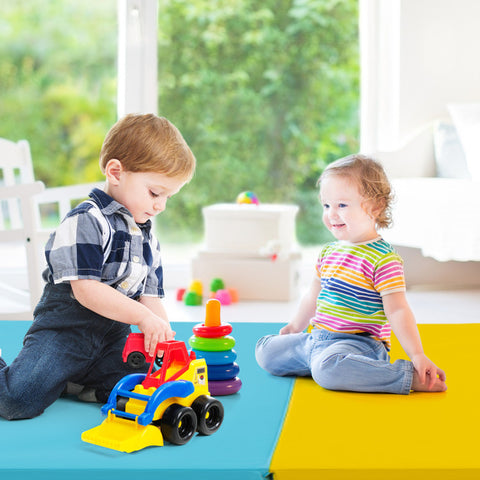News
How to Choose the Right Gymnastics Mat for Tumbling and Acrobatics
Choosing the right gymnastics mat for tumbling and acrobatics is crucial for both safety and performance. Whether you're practicing flips, aerials, or handsprings, having the proper mat ensures a secure landing while reducing the risk of injury. With so many options available, selecting the best tumbling mat can feel overwhelming. This guide will walk you through the essential factors to consider when purchasing a gymnastics mat, from material and thickness to portability and durability.

Understanding Different Types of Gymnastics Mats
Not all gymnastics mats are designed for tumbling and acrobatics. Choosing the wrong mat can lead to discomfort and injuries. Here are some of the most common types of mats used for acrobatics, cheerleading, and gymnastics training.
- Panel Mats: These foldable mats are versatile and provide firm support for various gymnastic movements, making them ideal for beginners.
- Tumbling Mats: Designed specifically for high-impact landings, these mats come in various thicknesses and foam densities to absorb shocks effectively.
- Crash Mats: Also known as landing mats, these offer extra cushioning for advanced acrobatics, including flips and vaults.
- Air Track Mats: Inflatable mats provide a spring-like bounce, which helps with tumbling passes and softens landings.
Tip: If you're focusing on floor exercises and basic tumbling, a panel mat is a great choice. For advanced flips and aerial stunts, go for a high-density tumbling mat or air track.
Key Factors to Consider When Choosing a Tumbling Mat
Selecting the right gymnastics tumbling mat depends on several important factors.
Thickness and Density Matter
The thickness of a mat directly impacts its ability to absorb shock and protect against falls.
- Thin Mats (1-2 inches): Suitable for stretching, light gymnastics drills, and balance work.
- Medium Mats (2-4 inches): Ideal for basic tumbling moves like cartwheels and back handsprings.
- Thicker Mats (6+ inches): Best for advanced acrobatics and high-impact landings.
The foam density is just as important. High-density foam provides better shock absorption and stability, preventing joint strain.
Surface Material and Grip
A non-slip surface is essential to prevent slipping during landings and transitions. Vinyl-coated mats are popular because they are:
- Durable and easy to clean
- Water-resistant and sweat-proof
- Textured for better grip and traction
Avoid mats with overly soft surfaces, as they can cause instability when attempting fast movements.
Tip: If you sweat a lot during practice, opt for a moisture-resistant mat to maintain grip and prevent slipping.
Size and Portability
Consider the available space where you'll be using your mat.
- Small Mats (4’x6’ or 4’x8’): Great for home practice and limited space.
- Longer Mats (5’x10’ or 6’x12’): Ideal for tumbling passes and advanced routines.
- Foldable or Air Track Mats: Easy to transport and store when not in use.
If you need to move your mat frequently, choose a lightweight or foldable design for convenience.
Durability and Longevity
Investing in a high-quality gymnastics mat for tumbling and acrobatics ensures that it lasts through rigorous training sessions. Look for mats with:
- Reinforced stitching to prevent tearing
- Heavy-duty vinyl covers that resist wear and tear
- Shock-absorbing foam that retains its shape over time
Tip: Avoid low-cost mats made from cheap foam, as they break down quickly and lose their support.
Best Gymnastics Mat for Different Skill Levels
The right mat depends on your skill level and training goals.
- Beginners: A panel mat with medium thickness offers enough support for basic skills.
- Intermediate Gymnasts: A high-density tumbling mat helps with harder skills like aerials and back handsprings.
- Advanced Athletes: A crash mat or air track mat is necessary for high-impact training.
Conclusion
Choosing the best gymnastics mat for tumbling and acrobatics comes down to understanding your needs, skill level, and training intensity. Thickness, foam density, durability, and portability all play a role in making the right decision. Whether you're training at home or in a gym, investing in a high-quality tumbling mat will keep you safe and help improve your performance.

